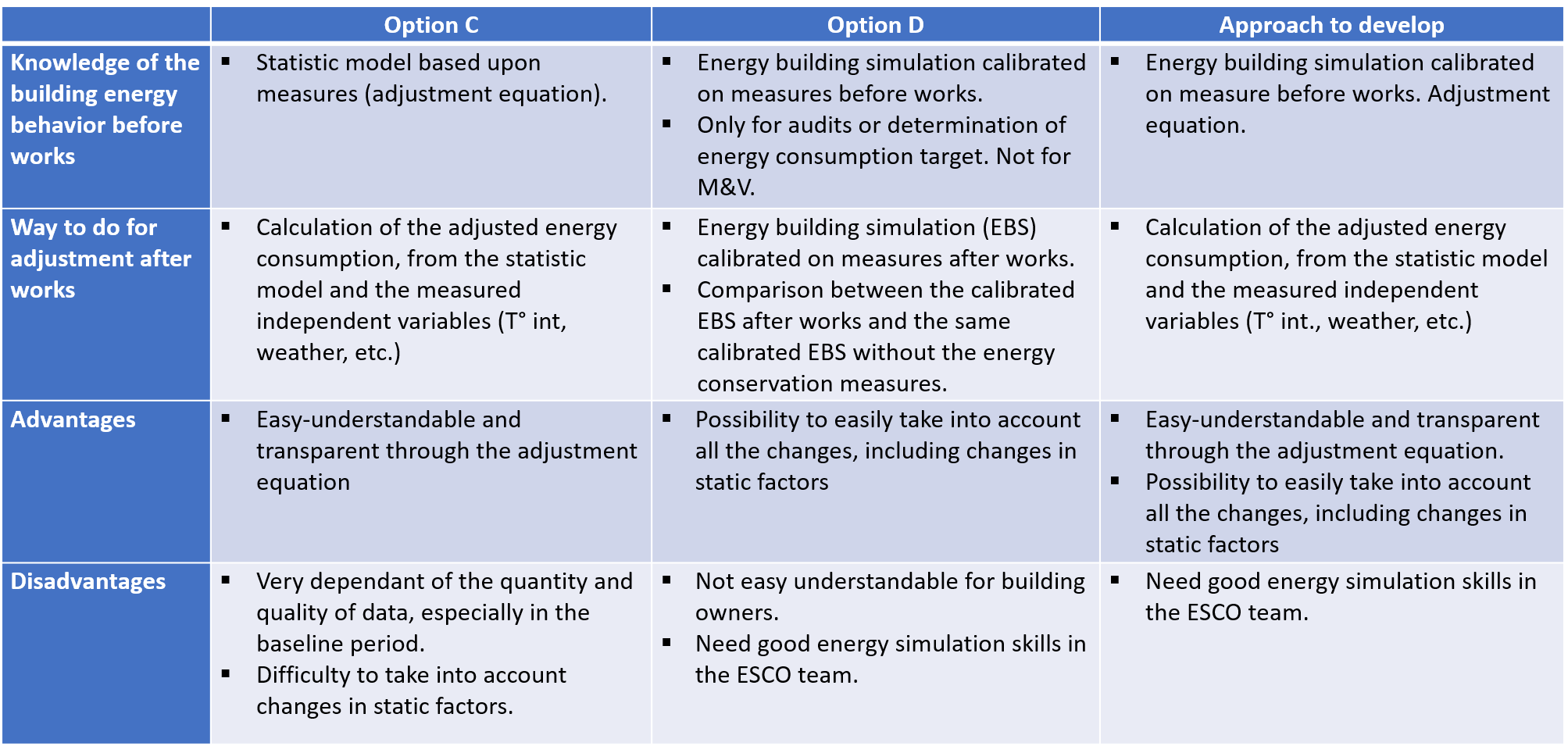By Paul Calberg-Ellen and Eric Vorger*
This article deals with recent breakthroughs in the world of energy simulation and the corresponding questions about the application of the IPMVP to the new capabilities offered by energy building simulation programs.
Recent breakthroughs of some building energy simulation programs
In a recent article, Simon Ligier et al., 2017 explain how building energy simulation programs allow ESCO to propose a transparent and easy-understandable adjustment equation while using, at the same time, the power of energy simulation to realize risk analysis related to the uncertainties of some parameters such as building characteristics, occupants behaviour or weather variability.
By using Monte-Carlo analysis, the building energy simulation programs generate hundreds of simulated energy consumption corresponding to different combinations of the explanatory parameters, by taking into account their uncertainty. Energy simulation specialists are quite knowledgeable of these techniques. For example, commercially available solutions such as the plug-in AMAPOLA of the Building Energy Software (BES) PLEIADES developed by IZUBA and KOCLIKO, or the BES OpenStudio are implementing them.

But we can go even further, as described by Ligier et al. We can develop a regression model from the hundreds simulated energy consumptions to determine an adjustment equation. By using a quantile regression instead of a simple linear regression, we can assess the adjustment equation at a given level of risk. This allows the ESCO to propose a guaranteed energy consumption, here called “Guaranteed Consumption Limit at a risk α,” GCLα:
• Which takes into account the uncertainties of the influent parameters, and turn it into a quantified risk on the energy consumption;
• Which, at the same time, is accompanied by an adjustment model, such as an easy-understandable linear model, to neutralized the effects of variables whom the ESCO is not responsible, dependently of the contract’s terms, as weather or occupancy for example.

Consequences in M&V approach
Regarding M&V, this new approach of the determination of an adjustment model coupled with the use of energy simulation program gives rise to a question: which IPMVP option should be applied to this kind of technique? Some of the considerations summed up in the Table 2 of the IPMVP Core Concepts 2016 will guide the choice of option. According to the definition given for each option in this table, the use of an energy simulation program suggests to choose Option D. However, in the manner savings are calculated, the use of measured data associated with a routine adjustment would rather suggest selecting Option C. The table below summarizes our thoughts.

Our analysis suggests there is a need of a real mix between methodological tools developed for Option C and Option D for the following reasons. Among other things, you must ensure the proper calibration of the energy simulation program. But also, you have to ensure that the adjustment model chosen is correct, based on some indicators such as CV(RMSE) and R².
To be more specific, it seems to us that we cannot deem that it is sufficient to consider both Option C and Option D IPMVP recommendations to assess the consistency of such a new approach which couples the determination of an adjustment model and the use of an energy simulation program.
Regarding the current M&V recommendations contained in the IPMVP, we believe that the appropriate process for reviewing the consistency of both simulation and adjustment model would have to be studied globally. We also believe that a new set of recommendations should eventually be developed in the IPMVP to address the numerous questions that are already arising – and will continue to rise – with the use of the tremendous new capabilities of building energy simulation programs.

(*) Paul-Calberg-Ellen is Deputy Director Energy at Association Régionale Biomasse Normandie in Caen area, France. He is also a member of EVO’s Extended Training Committee.
Eric Vorger is an Associate Founder with Kocliko, a French firm based in Bordeaux, France. The company offers energy optimization services for commercial, institutional and large apartment buildings.
END NOTE
1. Simon Ligier, Maxime Robillart, Patrick Schalbart, Bruno Peuportier. Energy Performance Contracting Methodology Based upon Simulation and Measurement. Building Simulation 2017, Aug 2017, San Francisco, United States. <http://www.buildingsimulation2017.org/>. <hal-01556848>




